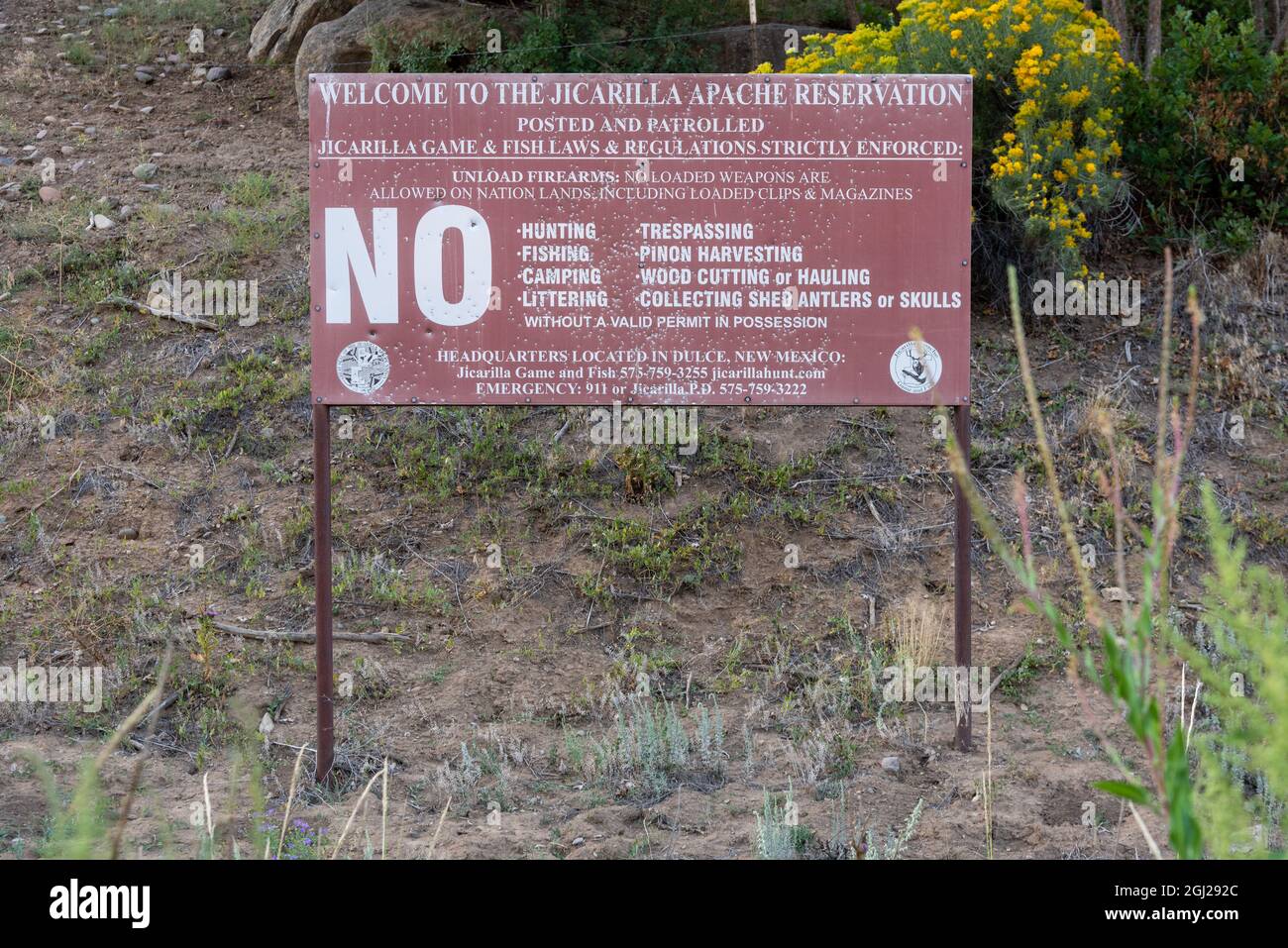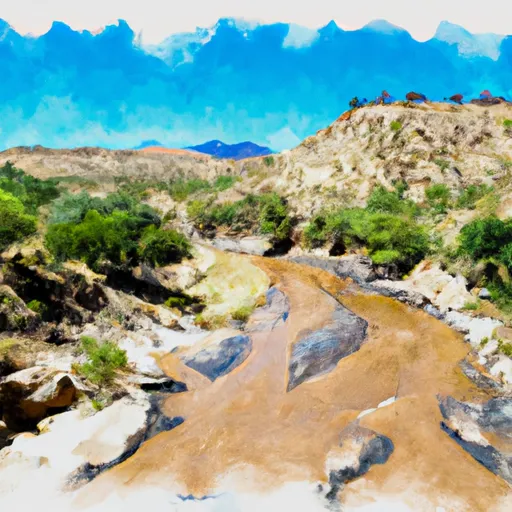
Echoes of Resilience: The Jicarilla Apache Nation Forges Its Future in New Mexico’s High Country
High in the rugged San Juan Mountains of northern New Mexico, where piñon and juniper dot the high desert and the crisp air carries the scent of pine, lies the heart of the Jicarilla Apache Nation. Centered around the small community of Dulce, this sovereign nation, often overlooked in the broader narrative of Native American tribes, stands as a testament to enduring resilience, cultural preservation, and a tenacious drive for self-determination against a backdrop of complex history and modern challenges.
The Jicarilla Apache, whose name is believed to derive from the Spanish word for "little baskets" – a nod to their exceptional basketry skills – have occupied these lands for centuries. Their ancestral territory once stretched across parts of New Mexico, Colorado, Oklahoma, and Texas, encompassing diverse landscapes from plains to mountains. Unlike some other Apache groups primarily known for their fierce warrior traditions, the Jicarilla were a blend of plains and mountain cultures, master hunters and gatherers who adapted their lifeways to the seasons, following buffalo herds and harvesting wild plants. They were, and remain, Diné – The People.
Their history is, like many Indigenous nations, marked by profound disruption. The arrival of Spanish, Mexican, and later American colonizers brought an era of conflict, forced relocation, and disease that decimated their population and threatened their very existence. The Jicarilla faced relentless pressure, often caught between warring factions, and endured multiple forced removals to different reservations before finally securing their current lands in 1887 and 1907. These lands, initially deemed undesirable and remote, became their permanent home, a place to rebuild and reaffirm their identity.
The Jicarilla Apache Reservation, spanning approximately 877,000 acres, is a landscape of stark beauty and rich ecological diversity. From the pine-forested mountains that reach elevations over 9,000 feet to the sagebrush-covered mesas and the winding Chama River, the land itself is central to Jicarilla identity. It is not merely real estate; it is a living entity, imbued with ancestral stories, sacred sites, and the spirits of their forebears. "Our land is not just dirt and rocks; it’s our history, our church, our future," explains a tribal elder, her voice resonating with the weight of generations. "Every mountain, every stream tells a story. We are bound to this place."
For decades, the Jicarilla struggled with poverty and limited resources, a common plight for many reservation communities. However, a significant turning point arrived in the mid-20th century with the discovery of vast oil and natural gas reserves beneath their lands. This geological fortune transformed the Jicarilla Nation, providing the financial bedrock for unprecedented self-sufficiency and economic development. Unlike many tribes whose resources were exploited by external entities, the Jicarilla fought tirelessly to assert their sovereign rights over these resources, ensuring that the wealth generated directly benefited their people.

This newfound prosperity allowed the Jicarilla to invest heavily in their community. They built modern infrastructure, including roads, schools, and healthcare facilities. They established a robust tribal government, taking control of their destiny and developing sophisticated resource management strategies. The Jicarilla Nation became a model of tribal self-governance, demonstrating how resource wealth, when managed responsibly and ethically, could empower a nation to uplift its people.
Today, the Jicarilla Apache Nation is a vibrant and forward-looking community that skillfully balances tradition with modernity. While oil and gas remain significant revenue generators, the Nation has wisely diversified its economy. The Apache Nugget Casino and Travel Center provides entertainment and employment, while the Jicarilla Game and Fish Department meticulously manages their abundant wildlife, attracting hunters and anglers from across the country to their trophy elk and trout-filled lakes, like the pristine Stone Lake. These enterprises not only create jobs but also allow the Nation to assert control over its natural heritage and share its beauty with the world on its own terms.
Cultural preservation is a paramount concern for the Jicarilla. The Athabaskan language, though challenged by the pervasive influence of English, is actively taught and encouraged, with immersion programs and community initiatives aimed at revitalizing its use among younger generations. Traditional arts, particularly the exquisite basketry for which they are named, continue to be practiced and celebrated. The Jicarilla Apache Nation Cultural Center and Museum plays a vital role in preserving artifacts, documenting history, and educating both tribal members and visitors about their rich heritage.
Perhaps one of the most powerful expressions of Jicarilla culture is the annual Go-Jii-Ya, or girls’ puberty ceremony. This ancient coming-of-age ritual, held over several days, celebrates young women transitioning into adulthood, emphasizing their connection to the land, their ancestors, and the responsibilities they will carry within the community. It is a time of prayer, song, dance, and spiritual renewal, a profound affirmation of Jicarilla identity and continuity. "The Go-Jii-Ya reminds us who we are, where we come from, and where we are going," says a mother whose daughter recently underwent the ceremony. "It is a bridge between our past and our future."
Despite their economic successes and cultural strength, the Jicarilla Apache Nation faces contemporary challenges common to many Indigenous communities. Issues such as healthcare disparities, access to quality education, and the ongoing struggle against historical trauma, which manifests in social issues like substance abuse and mental health concerns, require constant attention and innovative solutions. The cyclical nature of resource prices also presents economic vulnerabilities, underscoring the importance of continued diversification.
Furthermore, the Jicarilla remain steadfast advocates for their sovereignty, navigating complex legal and political landscapes to protect their treaty rights, manage their natural resources, and ensure their voice is heard on regional and national stages. They actively participate in inter-tribal organizations, forging alliances and sharing knowledge to strengthen Indigenous self-determination across the country.
Looking to the future, the Jicarilla Apache Nation is committed to investing in its youth, fostering leadership, and equipping them with the tools to thrive in both the traditional and modern worlds. Education remains a cornerstone, with tribal scholarships supporting students pursuing higher education and vocational training. The goal is not just economic prosperity, but holistic well-being – a community where culture thrives, elders are revered, and children grow up with a strong sense of identity and purpose.
The Jicarilla Apache Nation, nestled in the high country of New Mexico, is far more than just a reservation; it is a living, breathing testament to the power of resilience, the unbreakable bond between a people and their land, and the unwavering spirit of self-determination. From the ancient pathways of their ancestors to the bustling tribal enterprises of today, the Jicarilla continue to write their story, a compelling narrative of survival, adaptation, and the enduring strength of the human spirit. Their echoes of resilience resonate across the mesas and through the mountains, a powerful affirmation that their future, like their past, is firmly in their own hands.


